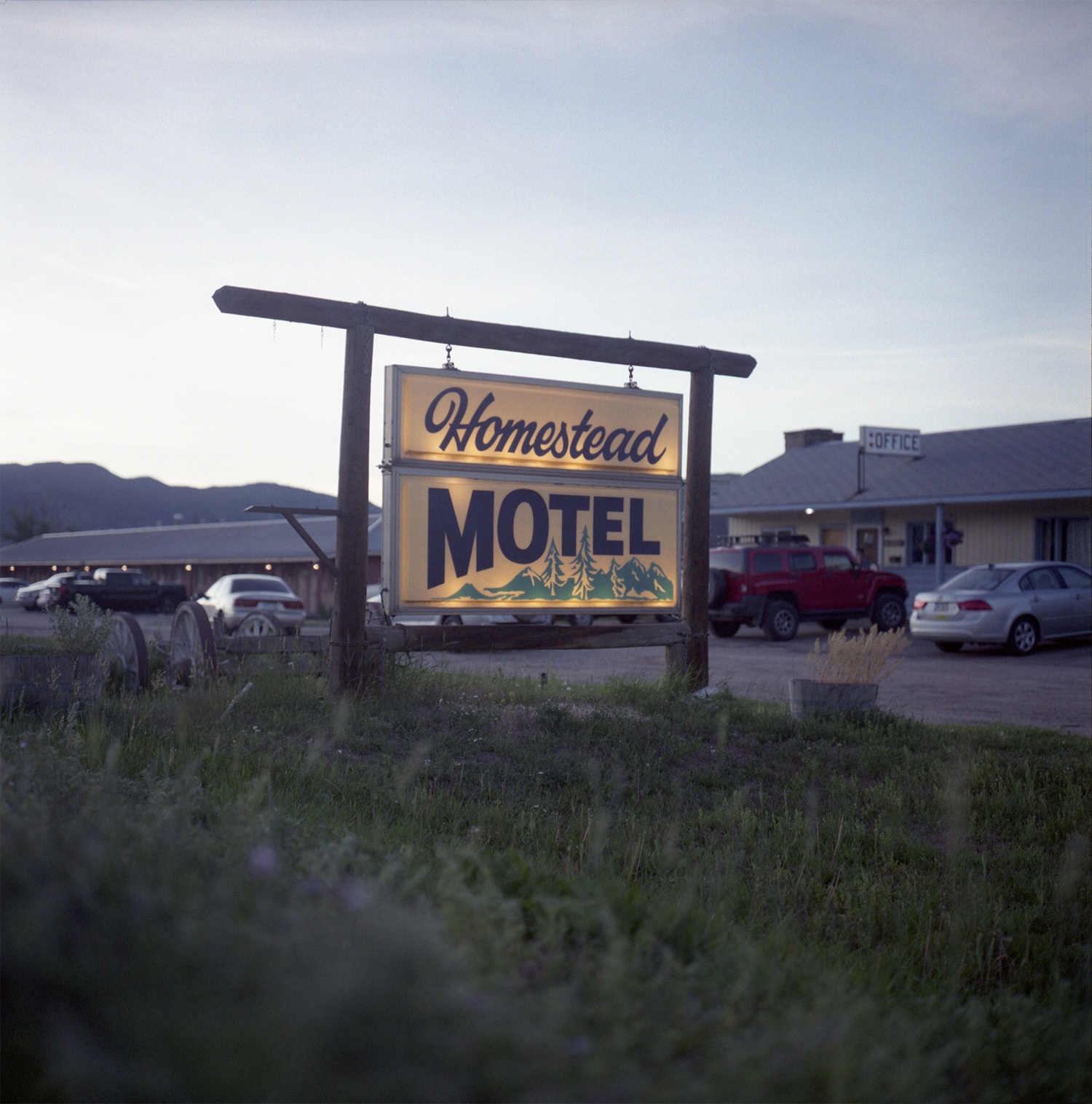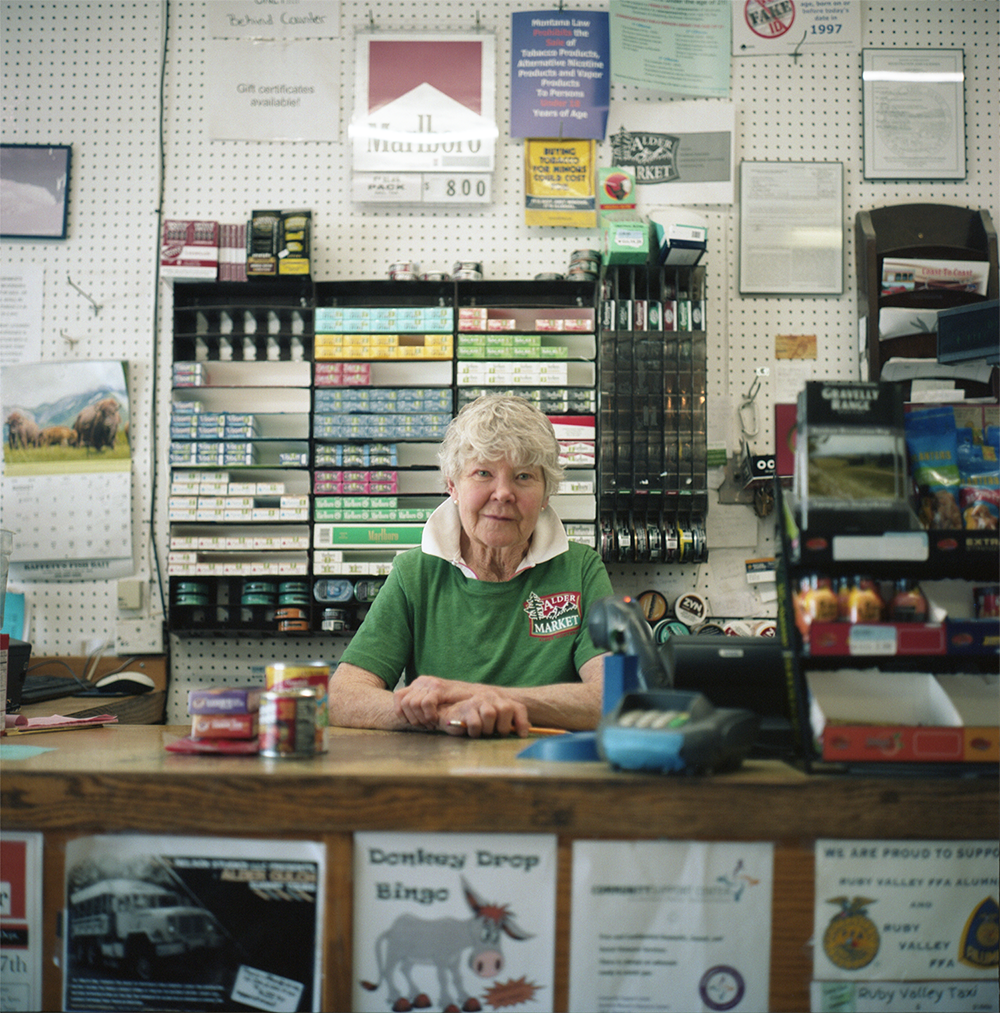
Ismar Badžić
Getting There
Jan 18, 2023
Ismar is a Bosnian born photographer and filmmaker inspired by the connections he establishes with people or places. In his series ‘Getting There’, Ismar portrays the cycling trip he did in the US in 2019 realising about the importance of the journey itself with all of its unexpected things, and welcoming the generosity of the people that he found during his journey.
First of all thank you very much for your contribution to our project. Can you please introduce yourself for us?
I was born in Bosnia but have lived in Britain since I was one. I studied Philosophy before doing a Masters in documentary. I’m now a documentary filmmaker.
How did you start in photography?
I bought a Canon 550D as a cheap way into filmmaking as a teenager. Pretty quickly - and quite obviously - I started messing around with the photo side of things and really enjoyed it. Photography really helped me with the fundamentals of filmmaking in those early days. In a lot of ways I found it more fun, definitely less restrictive than filmmaking so it became a creative break from it. It allowed me to stay in familiar visual territory without needing to worry about structure, sound, editing and other aspects of filmmaking which I felt slowed me down. I love the simplicity - and difficulty - of everything being condensed to a single image in photography. There’s nowhere to hide. In that way, I think it’s much harder than filmmaking.
I moved to analogue photography because sifting through millions of photos and fiddling with them in post was too reminiscent of filmmaking, sapping the initial freedom photography gave me. Analogue returned that simplicity whilst giving me a new challenge with higher stakes but also higher rewards. It also took me back to my childhood, to the clicks and clacks, the winding, the waiting, the printing, the albums, the look and the magic we all feel with analogue.
What is ’Getting There’ about?
Oh man. There are a million answers to this. Today, I’m going with this one.
In early 2019 I was burned out, bummed out and bored. I wanted to do something new so I bought a Rolleiflex from a guy on Gumtree and decided to go to America that summer. I ended up cycling from Denver to Portland taking photos and writing. The only thing guiding me was a desire to see little and lesser known places but I had no plan beyond that.
That’s the backdrop. The meaning emerged afterwards. Unsurprisingly, the thing that binds quite a disparate series of photos together is a sense of journey itself. The photographic journey, the physical journey and the personal journey are all bundled up together.
One of the things that came out of the journey was accepting things not going to plan - something I learned one puncture at a time. Obstacles and the outcomes they led to taught me to accept where I was instead of where I expected to be. These photos are a tribute to that - to those bits in between; between expectations, between points on a map and times in your life. It’s about understanding there’s always further to go while also embracing where you find yourself. As a cyclist, as a photographer, as a person, as anyone on any kind of journey.
It’s about the effort, the going, the getting more than arriving wherever you think there might be. That’s what I felt on the trip and that’s what I see in these photos.
What is the biggest thing that you discovered or thought about when making this project?
So I had this romantic notion of rumbling through towns in the middle of nowhere, capturing the streets and signs and neon and rust of lesser seen places. But I was surprised by the people I was also drawn to and the portraits I ended up taking. Central to the trip was the idea of being alone so the portraits ran counter to that. I think a big part of that is because of the kindness and generosity of strangers which I experienced while I was out there. It started on my very first day on the bike when a couple in Colorado welcomed me into their home after I underestimated the distance to a campsite. That kindness carried on for the whole trip. I felt welcomed and perhaps because of that, I welcomed people into my photos in a way I didn’t expect. In general the trip made me realise that, at our core, we’re social beings. We need other people - even when we might not like to admit. It’s obvious isn’t it? But this journey helped me to realise it and the portraits are testament to that.
On a technical level, I had to constantly think about what I really wanted to photograph because I had a very limited stock of film with me on the bike and I never knew where I’d be able to get more. Do I take this photo or do I save it for something up ahead? Never knowing what lay ahead. It took the limitations inherent to analogue photography to another level and made me incredibly discerning. I’ve never spent more time looking through a viewfinder before deciding to put the camera away. Equally, it forced me to be braver, to take photos I may otherwise have shied away from because I knew I wouldn’t get another chance. The decision making, gambling, was a thrill; a tough and torturous thrill. I got what I got, I missed what I missed and that’s all there is to it. Going back to the idea of acceptance, the photos are a visual result of that.
- What inspires your work in general?
I’ve never thought about this before. My first reaction was people, but that’s not true. I’ve spent far more time pointing my camera at places than people. The common thread between the people and places I’m drawn to, I think, is character. This is both broad and hard to define but ultimately it comes down to feeling - feeling a connection to a person or to a place. Often I’m drawn to places that are at least a little rough around the edges and out of the way. As for people, it’s people without pretence, people with something quietly unique about them. A gas station attendant in a baggy green shirt, an old timer at his local bar, a beat up trailer in the evening light or the orange haze beneath the clouds at a college football game. Hopefully the photos convey both the character and mood I feel when taking them.
Who are your favourite photographers / artists?
Stephen Shore is the first photographer whose work I really fell in love with. I just want to step into the worlds within his photos. I’ve definitely worn that on my sleeve. The other is Stanley Kubrick, his symmetry and width - that’s had a huge influence on me in both film and photography.
What is your favourite photo book?
I don’t know many and own even fewer to be honest! Stephen Shore’s ‘Uncommon Places’ springs to mind but I don’t own it - yet...
I’m going with ‘Theatre’ by Lewis Khan which is special to myself and my partner. We picked it up at a photobook festival near us last year. It was during the pandemic and we were wearing our face masks as we browsed the books. It’s a series of photos taken in a hospital and for obvious reasons, it spoke to us and captured the moment we were living in. But It didn’t go down the expected route of focusing exclusively on portraits of staff and patients - though there are plenty - what made it special to me is the way it captured clinical spaces with a kind of mysterious gravity, hinting at what might be just outside of the frame. It’s full of unexpected angles and overlooked objects from a setting we’re all so familiar with. That marriage between familiarity and novelty is really powerful. It’s a beautiful but weighty book. For us as a couple, it’s also a unique reminder of a unique time in our lives.
Thank you very much for your time and contribution to analog magazine.
All images © Ismar Badžić















